Thursday, May 28, 2009
Tuesday, May 26, 2009
Sunday, May 24, 2009
Friday, May 22, 2009
Monday, May 18, 2009
Gateway Digital Cinema Supports the Premiere of 2 Indie Films
It is an acknowledged fact that the lack of financial resources and government support tend to put the development of Philippine cinema some step backwards. But this should not stop filmmakers, producers, and film industry institutions, companies, and entertainment-related businesses from helping one another for the improvement of our film industry.

The National Commission for Culture and the Arts (NCCA), Gateway Cineplex 10, and Colorwheel Media Studios present “Indie HD: Premiere of the Filipino and Korean Independent Short Films ‘Pera-perahang Lata’ and ‘Technophilia’ in HD format and a Discussion On Digital Technology in Indie Films Today.” Directed by Rianne Hill Soriano, the two films will be projected in HD format at the Cinema 1 of Gateway Cineplex 10 (Dolby Super Digital Cinema) on June 3, 2009, 6:30 p. m.
The two independent films share a common theme and treatment on factories – the normal factory setting reflecting various aspects of life for “Pera-perahang Lata” and the human factory effect of technology on people for “Technophilia.”
The digital technology of today can now provide more technically competent independent films. The lower cost of production puts a distinct advantage in maximizing resources for a more effective production workflow. "Pera-perahang Lata" is shot using the HD camera Panasonic Varicam with final output in HD. The film "Technophilia" is shot using 16mm film with screening format in HD. And these two films are privileged to be screened HD, not via a low resolution DVD projection, courtesy of Gateway Cineplex 10, home of two of the four digital cinemas in the country today.

HD is truly paving the future of cinema. The high resolution and mostly file-based filming in HD cameras make it easier for the footages to be utilized for post-production work. The file-based showing of films becomes a real advantage to film theaters as there are no more scratches and noises due to wear and tear of a 35mm print and there are no more possibilities for human error in rewinding and queuing up prints. A feature film normally has around four to six prints changed every 20 minutes (variable) of the film’s running time. Now, having things digital, the programming can be automated accordingly. And what the future can further bring is the easier transportation/sending of film files via satellite and other means instead of providing hundreds and thousands of film prints for a film that is “now showing” where every theater in the whole city, the country, or even the world should have a physical copy of the expensive prints. File-based systems in 2K and 4K resolutions also provide quality sound and visuals in par with what 35mm film projections can bring and even put the right subtitles for films of worldwide release. All these, in the long-term, entails lower cost than using film-based projections; thus making it more feasible for the Philippines to catch up with the technology in the global perspective.
“Indie HD” is made possible by the Gateway Cineplex 10, NCCA, Colorwheel Media Studios, Innovasia, Korean Embassy, Marikina Cultural Affairs Office, and NU 107. The premiere is open to the public. Email nordic.gift@gmail.com to reserve free tickets. First come, first served. You may visit www.peraperahanglata.blogspot.com, www.technophiliafilm.blogspot.com, and www.riannehillsoriano.com/blog for more information about the films.
Labels:
film premiere,
pera-perahang lata,
Technophilia
Friday, May 15, 2009
Filipino and Korean Shorts Premiere at Gateway Digital Cinema This June
The National Commission for Culture and the Arts (NCCA), Gateway Cineplex 10, and Colorwheel Media Studios present “Indie HD: Premiere of the Filipino and Korean Independent Short Films ‘Pera-perahang Lata’ and ‘Technophilia’ in HD format and a Discussion On Digital Technology in Indie Films Today.” Directed by Rianne Hill Soriano, the two films will be projected in HD format at the Cinema 1 of Gateway Cineplex 10 (Dolby Super Digital Cinema) on June 3, 2009, 6:30 p. m.

Von Arroyo makes his film debut in “Pera-perahang Lata,” a film exploring the many facets of a struggling life in a world that is full of unpredictable moments – where things are beyond one’s control. The cast also includes Arnold Reyes, Gio Respall, Paul Sy, Judith Soriao, Dante Balois, Jocel Vergel de Dios, Loida Petalo, Henrex Aldueso, Rey Solo, Dido dela Paz, Marnie Lapus, Ces Aldaba, Karl Moro, Rommel Buenaventura, Ellen Estrada, and other talented character actors and actresses in film, TV, and theater.
The film is produced through a grant from the NCCA and is also blessed by the generosity of Unitel Productions, FILMEX, Engine Room, Optima, Hit Productions, Outpost Digital Frontier, city government of Marikina, Marikina Riverbanks, St. Francis Xavier Parish Church, Streetpark Productions, and Brass Knuckles.

The Korean film “Technophilia,” a Korean-Filipino-Iraqi film production, shows how technology can shape people’s lifestyles, affect their relationships, and make their interactions as mechanistic as their gadgets. It stars fresh Korean, Japanese, American, and Filipino talents and is made possible through the filmmaker’s participation to the Asian Filmmakers Training Program in Seoul, Korea last year. The film is supported by the Korean Film Council, the prime mover in Korean cinema, Korean Academy of Film Arts, the country’s elite film school, and Korea University, where the filmmaker got an honorary alumna status during her six-month stay in Seoul last year.
Through the help of the Araneta Group, the films are privileged to be shown in HD format, not via a low resolution DVD projection. Within the premiere of the said films will be a full program incorporating a brief discussion on how independent filmmakers can maximize the filmmaking process. Gateway will provide information on how the digital cinema is starting to shape the future of film theaters. Christie will give basic details about the HD projection on digital cinemas. Optima Digital will discuss the feature film workflows available for filmmakers, and the NCCA will impart information about their grant system for independent filmmakers. The Minister and Consul General of the Korean Embassy will be a guest of honor during the event. A Q&A will follow after the screenings.
The event is made possible by the Gateway Cineplex 10, NCCA, Colorwheel Media Studios, Innovasia, Korean Embassy, Marikina Cultural Affairs Office, and NU 107. The premiere is open to the public. Email nordic.gift@gmail.com to reserve free tickets. First come, first served. You may visit www.peraperahanglata.blogspot.com, www.technophiliafilm.blogspot.com, and www.riannehillsoriano.com/blog for more information about the films.
Labels:
film premiere,
pera-perahang lata,
Technophilia
Tuesday, April 7, 2009
Thursday, March 19, 2009
Production Stills
Hmmmhhh.. I noticed that my uploads of the production stills here rendered around 1 to 2 stops under... Everything is a little bit darker than the actual film... Anyway, let's just wait for the premiere! Soon! :)
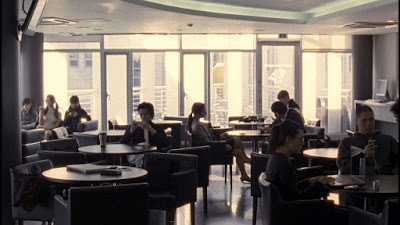
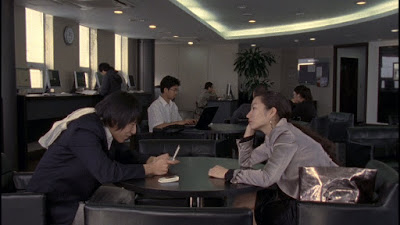
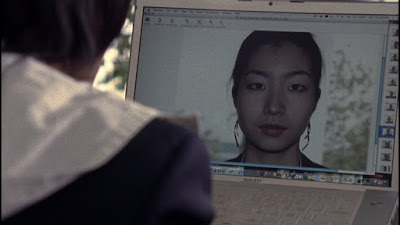
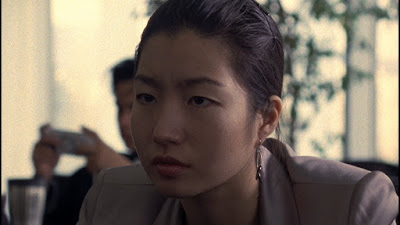


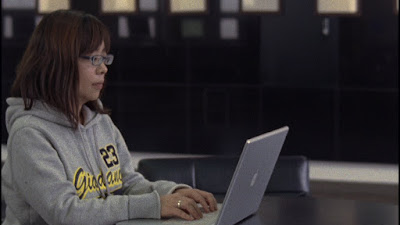


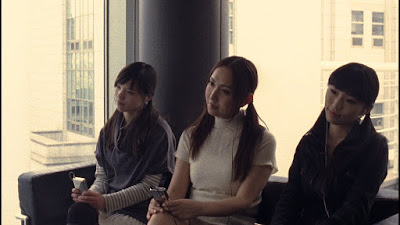














Saturday, February 21, 2009
Technophilia BTS
Behind-the-scene video
Labels:
gadgets,
Iraq,
Jong-jin Lee,
KAFA,
KOFIC,
KU,
Mohammed Jano,
Philippines,
Rianne Hill Soriano,
Saekyung Lee,
short film,
South Korea,
technology,
Technophilia
Sunday, January 11, 2009
About Technophilia: Film Treatment
This short film is about a young couple in the middle of a relationship crisis. Inside a hang-out place, the techie boyfriend is preoccupied by his Nintendo DS (just like the rest of the people engrossed with their own gadgets - laptops, mobile phones, iPods, mp3 players, PSPs, etc.); while the bored girlfriend seeks some attention from the game addict guy.
The look exudes some coldness and superficiality. The characters are boxed up by the technology and lifestyle that try to cover up their deeper emotions through the gadgets and entertainment devices they utilize.
Knowing that the film requires a techie physicality, the look of the film is very stylized - and in support to this is the sound design and musical score utilized very distinctively and in line with the film’s stylized concept about technology and gadgets. The shots generally exude linear movements. In the same way, the mise-en-scené is filled with straight lines, no much curves and waves. The colors are in the neutrals – whites, silvers, blacks, grays.
There is a tinge of quirkiness in the film – reflecting the techno, geeky, droll, and zany aspects that technology can bring. The robotic treatment renders a gadget factory feel. These are shown in the somehow exaggerated and considerably outlandish computer scenes of the couple and the robotic movements as seen on a number of shots.
The look exudes some coldness and superficiality. The characters are boxed up by the technology and lifestyle that try to cover up their deeper emotions through the gadgets and entertainment devices they utilize.
Knowing that the film requires a techie physicality, the look of the film is very stylized - and in support to this is the sound design and musical score utilized very distinctively and in line with the film’s stylized concept about technology and gadgets. The shots generally exude linear movements. In the same way, the mise-en-scené is filled with straight lines, no much curves and waves. The colors are in the neutrals – whites, silvers, blacks, grays.
There is a tinge of quirkiness in the film – reflecting the techno, geeky, droll, and zany aspects that technology can bring. The robotic treatment renders a gadget factory feel. These are shown in the somehow exaggerated and considerably outlandish computer scenes of the couple and the robotic movements as seen on a number of shots.
About Technophilia: Film Statement
This 7-minute film is about how technology starts to shape people to become too dependent on it that relationships and lifestyles are altered, and later on, possibly destroyed. At one point by now, our interactions to other people are becoming as robotic as the machines we use.
After the first three months that I, a filmmaker from a developing country as the Philippines, lived in Seoul, I have walked going to places, I have ridden the subway, the bus, the taxi... I have met various people along the way. And with the technology now, one common thing noticeable is how much technology has affected people’s lifestyle. Most listen to music or watch TV from their mobile phones more than talking to their companion in the subway or bus. People walk with earphones plugged on their ears without much caution on the important sounds they might need like the beeping of an unanticipated fast-speeding motorcycle about to bump them on the road. Or perhaps, an iPod addict from the sidewalk not hearing an old special friend riding the bus and calling his attention (and they have not seen each other for the last 10 years). Indeed, relationships and the ways of life have been greatly changed by technology.
For a foreigner artist from Manila as myself, how much do I lose every time I go to Korean tourist spots when I rather shoot with my SLR and video cameras rather than enjoying the very presence, the very feel of being in wonderful places through my own eyes? How much do I miss on the experience?
How much time do people spend online nowadays? How much time do people allot for personal meetings? In this fast-paced era filled with much technological innovation, it’s great to have many choices to keep in touch including the internet, mobile phone, telephone, and the considerably obsolete snail mail (it still works on specific occasions). Greeting cards before, e-cards now. No need to go out to shop, just watch TV, dial the number, or surf the internet, key in the credit card number, and finish it with a click. In cars, the directions are provided by a piece of GPS-capable LCD screen. Lots of things are scan-friendly, touch-and-go, plug-and-play. Sensors and codes are used in lights, locks, and other security and convenient devices. There are so much things to do, there is too much work to finish. And it seems like there’s too little time. When could be the last moment a person yielded to the cliché of stopping for a bit and smelling the flowers?
Things are so easy, so convenient. Entertainment is mostly boxed up in gadgets. And in Korea, MP3 players and handyphones are now TV and small movie screens as well. One time, I was at the subway trying to observe people around, my imaginative mind actually saw a bunch of robots listening to their masters which turn out to be their mobile phones and mp3 players/iPods. People even miss out on the stations they should get off to because they are too preoccupied by what they’re watching. And by this time, I made this concept for the film. The story won’t say that technology is bad, it just wants to convey how technology should be in harmony with the way people should live their lives as human beings who feel, love, and appreciate the world more than just the convenience of every technological breakthrough. Human relationships are vital. Computers and gadgets should not rule the person. Rather, they should be utilized to make human lives better and more meaningful.
Quality time with a loved one should not be fully controlled by text messaging, voice calls, and video chats. Personal interaction should never be ignored.
There are moments that we should pause for a bit and realize how far we are digging into technology that we are starting to ignore too much on our relationships and what it means by quality time. Perhaps, we can keep both instead of falling too much on only 1 aspect and closing ourselves to it.
After the first three months that I, a filmmaker from a developing country as the Philippines, lived in Seoul, I have walked going to places, I have ridden the subway, the bus, the taxi... I have met various people along the way. And with the technology now, one common thing noticeable is how much technology has affected people’s lifestyle. Most listen to music or watch TV from their mobile phones more than talking to their companion in the subway or bus. People walk with earphones plugged on their ears without much caution on the important sounds they might need like the beeping of an unanticipated fast-speeding motorcycle about to bump them on the road. Or perhaps, an iPod addict from the sidewalk not hearing an old special friend riding the bus and calling his attention (and they have not seen each other for the last 10 years). Indeed, relationships and the ways of life have been greatly changed by technology.
For a foreigner artist from Manila as myself, how much do I lose every time I go to Korean tourist spots when I rather shoot with my SLR and video cameras rather than enjoying the very presence, the very feel of being in wonderful places through my own eyes? How much do I miss on the experience?
How much time do people spend online nowadays? How much time do people allot for personal meetings? In this fast-paced era filled with much technological innovation, it’s great to have many choices to keep in touch including the internet, mobile phone, telephone, and the considerably obsolete snail mail (it still works on specific occasions). Greeting cards before, e-cards now. No need to go out to shop, just watch TV, dial the number, or surf the internet, key in the credit card number, and finish it with a click. In cars, the directions are provided by a piece of GPS-capable LCD screen. Lots of things are scan-friendly, touch-and-go, plug-and-play. Sensors and codes are used in lights, locks, and other security and convenient devices. There are so much things to do, there is too much work to finish. And it seems like there’s too little time. When could be the last moment a person yielded to the cliché of stopping for a bit and smelling the flowers?
Things are so easy, so convenient. Entertainment is mostly boxed up in gadgets. And in Korea, MP3 players and handyphones are now TV and small movie screens as well. One time, I was at the subway trying to observe people around, my imaginative mind actually saw a bunch of robots listening to their masters which turn out to be their mobile phones and mp3 players/iPods. People even miss out on the stations they should get off to because they are too preoccupied by what they’re watching. And by this time, I made this concept for the film. The story won’t say that technology is bad, it just wants to convey how technology should be in harmony with the way people should live their lives as human beings who feel, love, and appreciate the world more than just the convenience of every technological breakthrough. Human relationships are vital. Computers and gadgets should not rule the person. Rather, they should be utilized to make human lives better and more meaningful.
Quality time with a loved one should not be fully controlled by text messaging, voice calls, and video chats. Personal interaction should never be ignored.
There are moments that we should pause for a bit and realize how far we are digging into technology that we are starting to ignore too much on our relationships and what it means by quality time. Perhaps, we can keep both instead of falling too much on only 1 aspect and closing ourselves to it.
Subscribe to:
Posts (Atom)



















